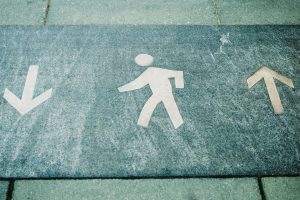Understanding Your Buyer’s Journey
The process your ideal prospect takes to become a buyer is known as the buyer’s journey. Every buyer goes through a journey when making purchasing decisions regardless of what industry you are in.
For most businesses, your buyer’s journey covers 3 main stages:
- Awareness: The buyer has identified that they have a need or a problem.
- Consideration: The buyer starts searching for a solution to solve their problem.
- Decision: The buyer makes a choice based on the information they’ve gathered.
These stages define where the buyer is, and it goes to their intent. What are they intending to do? What do they do in order to choose to purchase?
FREE Checklist: Creating An Effective Buyer's Journey
9 Questions About Your Buyer’s Journey
 When you answer these 9 questions below, you’ll be able to ensure that you are serving your customers in the way they intend to be served, when they want it.
When you answer these 9 questions below, you’ll be able to ensure that you are serving your customers in the way they intend to be served, when they want it.
You can go through this list every time you’re creating a product, service, or content for marketing so that you can laser target your best customers.
1. What Stage of the Buyer’s Journey Is the Prospect In?
Study each stage of the buyer’s journey so that you can determine the stage the person is in for the information you’re going to provide. For example, when someone comes to your website through social media by clicking through a share of a blog post, what are they expecting? This is based on whether it’s the first time they found you or whether they are already a customer.
2. What Is Your Your Buyer’s Intent?
When buyers are intent on something, they really don’t like to be distracted. For example, what is the buyer doing during the consideration stage of their buying journey? If they are reading your case studies and other information, they don’t want to be inundated with “buy now” messages. Instead, point them to more information.
3. What Exactly Do They Need?
Based on their intent at the time, you should be able to determine what they need. They may need case studies, testimonials, an assessment to further personalize the information, or they may need to talk to you in person to help them choose.
4. What Is Your Role in Each Stage?
In each stage of the buyer journey funnel, you have a different role or intent too. For example, after the customer has purchased from you, your role is to ensure they don’t experience buyer’s remorse. Do this by following up with more information and help using the product or service.
5. What Content Types Do Your Audience Want and Need at Each Stage?
The type of content you deliver to your audience at each stage is important because you may need to gently guide your audience toward an assessment or toward a freebie that your offering. This method of inbound marketing attracts prospects by creating valuable content tailored to them. While outbound marketing interrupts your audience with content they don’t want, inbound marketing offers and provides solutions to the problems they already have.
Check out the free Hubspot Inbound Certification Course to learn inbound marketing techniques that range from content creation to social promotion to converting and nurturing leads and beyond.
6. How Does Your Audience Find You?
Think about all the ways that your audience can find you, and then try to create even more ways that they can do so by creating more landing pages, sharing more articles, and communicating more with your audience in new ways.
7. What Experiences Is Your Buyer Looking For?
Many buyers are coming to you because they’re looking for a specific experience. For example, during the consideration stage of the buyer’s journey, what is the buyer considering? If you know what that expectation is, you can ensure that it happens. You’re also going to set expectations, starting with your first contact with them.
8. Do You Make It Easy for Your Buyer to Choose?
What is the buyer doing during the decision stage of their buying journey? Don’t cloud up your sales pages or website with too much navigation and choice. If you do have many choices, try using an interactive assessment on the website page so that you can direct them to more targeted content.
9. Do You Know the Questions and Answers They May Have at Each Stage?
Go through the stages and think about where your audience is in their buying process and what questions they may have at that point. For example, in the beginning, they’re really just looking for general information about their problem. And due to that, it’s the wrong time to give them the hard sell.
Free Checklist: Creating An Effective Buyer’s Journey
Understanding the stages of your buyer’s journey helps tremendously because it keeps you focused on delivering just what your prospect needs when they need it instead of getting off track. When you create an effective buyer’s journey, or sales funnel, it consistently turns prospects into paying customers if you structure it the right way. To learn more, download my free Buyer Journey Funnel Checklist which provides an outline sales funnel process for turning leads into prospects and prospects into customers.
